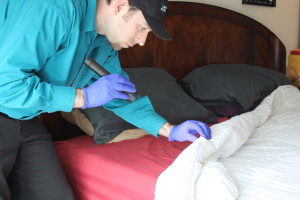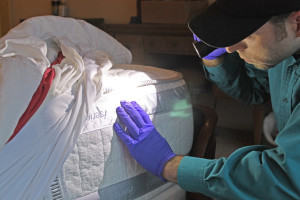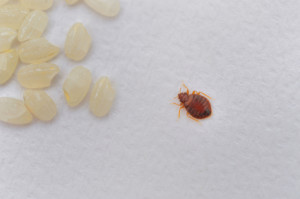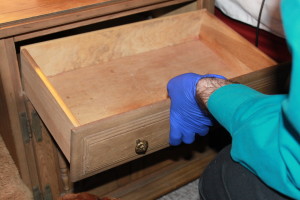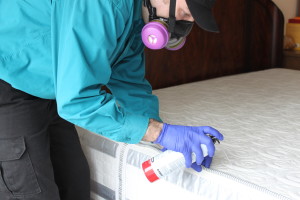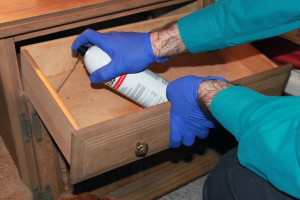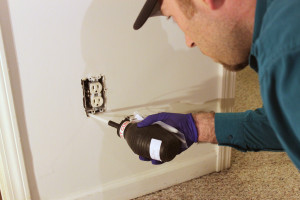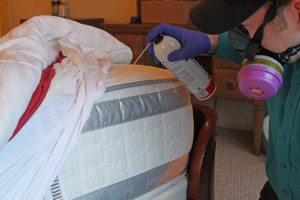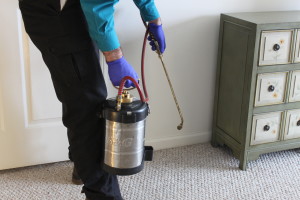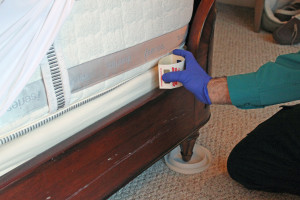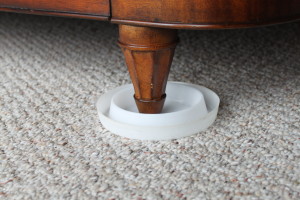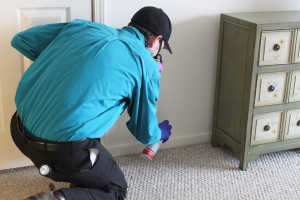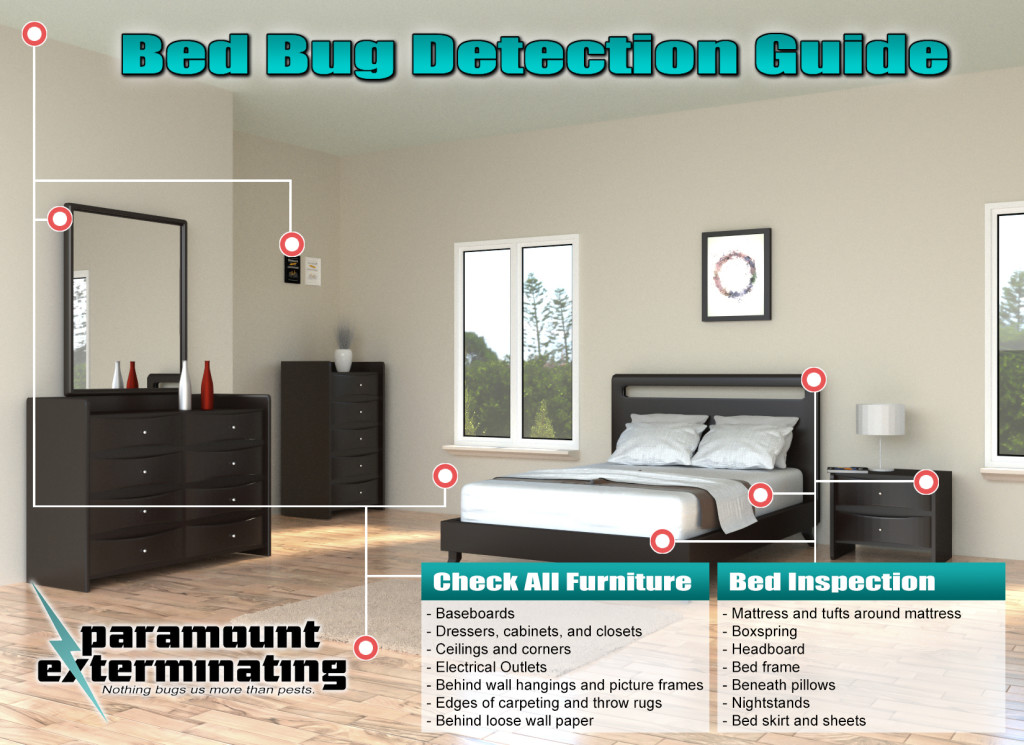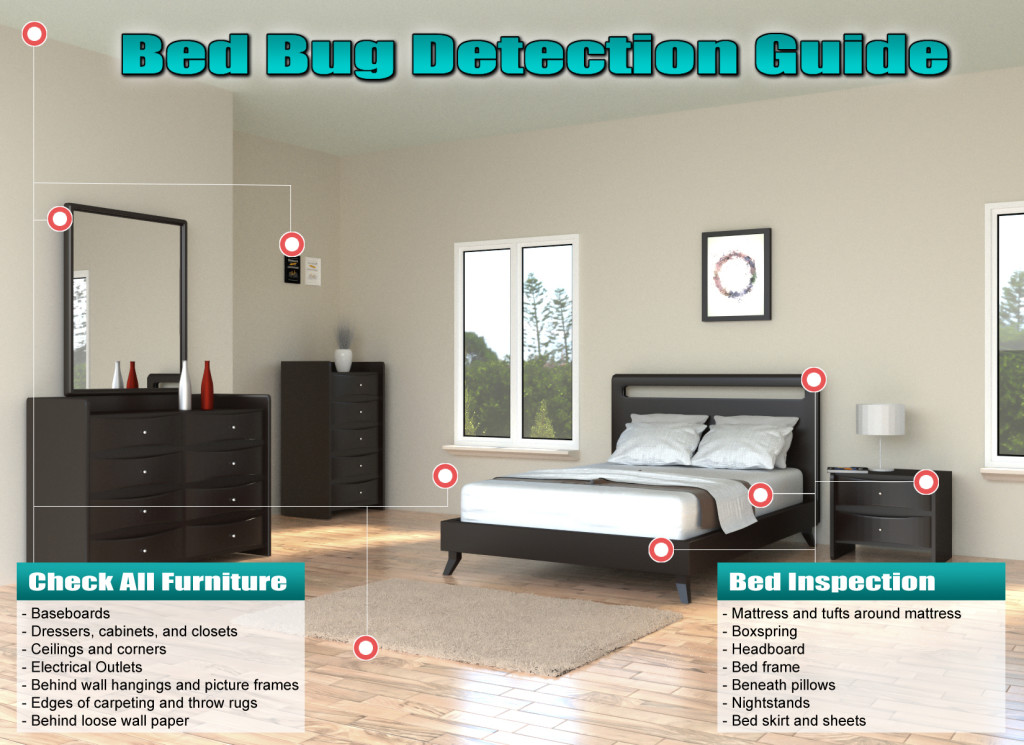CALL US TODAY! 800-273-6050
REQUEST YOUR FREE ESTIMATE
WHY FAMILIES AND BUSINESSES CHOOSE PARAMOUNT
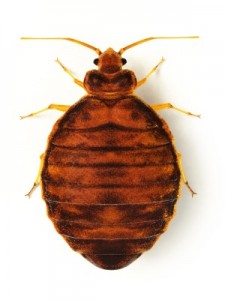 Faster Service – Get your services scheduled quickly and on YOUR time. No one wants to wait weeks for treatment, and we get that.
Faster Service – Get your services scheduled quickly and on YOUR time. No one wants to wait weeks for treatment, and we get that.- Local and Reliable – We have pest control technicians in Union City, Jersey City, Hoboken, Weehawken, North Bergen, and Hudson County everyday to assist our customers at a moments notice!
- More Efficient – We get things done right the first time, saving you time, money, and frustration.
- Better Tools – Our technicians only use the best products available on the professional market, making treatments more effective and longer lasting.
- Better variety of treatment methods – Including green treatments and steam treatments.
- More Experience – We’ve been defeating Bed Bugs since 1930, and have the most experienced technicians in the industry.
CALL US TODAY!
NJ Toll Free
800-273-6050
Newark
973-242-2212
Rutherford
201-945-7066
Jersey City
201-435-5900
Ridgewood
973-423-0234
Union City
201-865-7799
What Are Bed Bugs?
- Bed bug lives in small crevices around your home, everywhere from box springs to areas underneath loose wallpaper.
- Bed bugs have the potential to spread from room to room because their main mode of travel is by climbing onto people’s clothing or belongings.
- Since they feed on blood, they thrive equally well in clean areas as well as dirty ones—as long as there are people to feed on, bed bugs can survive and thrive.
- Bed bugs rarely attack pets as they are not bio-engineered to move through fur. Unless an infestation is very large and there is food competition, bed bugs will generally only bite humans.
Adult bed bugs are reddish-brown and 1/4 inch long with flat, oval bodies. They often feed at night. Their bites can cause itchy sores or swelling in some people, but other people have no reaction to being bitten at all. While bed bug bites can be annoying and painful, they aren’t known to transmit any diseases.
Nymphs (developing bed bugs) can survive without feeding for months, while adult bed bugs can survive for over a year. This is one reason why thorough exterminations and evaluations are necessary: bed bugs can hide in closets or other spaces undetected, reemerging to feed up to a year later.
BED BUG FACTS
What are bed bugs?
What do bed bugs look like?
What do bed bug babies (Nymphs) look like?
Nymphs (bed bug babies): Bed bug nymphs are very tiny, and grow larger with eat blood meal. When they are first hatched, nymphs are clear or light tan in color, and begin to turn orange/red as they begin to feed. Nymphs look like a smaller, lighter colored version of adults and can become adults in as little as five weeks with an available food source and proper temperature conditions.
What do bed bug eggs look like?
Bed bug eggs: Bed bug eggs are difficult to see and even harder to find. They are smaller than a grain of rice and have a white or transparent look. Bed bug eggs are also sticky, allowing them to be placed in hard to reach places and often unlooked areas like the tufts of a mattress, box spring, or headboard.
Can I see bed bugs without a magnifying glass?
Yes, you can see bed bug eggs, nymphs and adults with the naked eye. What makes them hard to find is that they like to hide in very tight spaces and often only come out at night.
What to look for if you think you may have bed bugs?
*Blood spots or staining on mattress or box spring; these spots are fecal staining from when bed bugs go to the bathroom. Areas with fecal staining often indicate an area that bed bugs are congregating. These spots often look like spots made with the tip of a red marker or red pen.
*Skin casts; bed bugs molt there outer shell 5 times before becoming full grown adults. These molted skin casts can be found in areas that bed bugs are hiding.
*Odor; bed bugs have a distinct odor to them created by their scent gland. This odor is described as musty or sweet smelling and grows worse with higher populations of bed bugs.
How long does a bed bug live?
The average lifespan of a bed bug is about 6 months to a year in normal temperature conditions. However, they can survive longer in cooler temperatures and can live without a meal for almost a full year if the conditions are right.
Are there other pests like look like Bed Bugs?
Yes. Bat bugs look very much like bed bugs and can be easily mixed up. However in our area, we only deal with bats on rare occasions, making this chance less likely. If bed bugs seem to be coming back annually and you have seen bats near your property you may be dealing with bat bugs. Stink bugs, small roaches, mites, and spider beetles are sometimes confused for bed bugs. When a closer look is taken, there are several distinguishing traits that will help determine the type of pest it is. If you are unsure, take a look in our pest library to find out more!
How do bed bugs grow and how long can they live?
After hatching, bed bug babies become adults in as little as 5 weeks. They go through 5 molting stages before they are full grown adults, growing in size with each molt. A blood meal must be taken before each molt. Female bed bugs can produce 4-7 eggs a week depending on the temperature, available mates and food sources. In laboratory conditions, the egg production amount can be as high as 11 eggs a week. This can total up to hundreds of eggs laid over a single female’s lifetime.
How do they get around?
Bed bugs get around by crawling and climbing into people personal belongings. They are often taken from one place to another inside of a person’s bag, luggage, or even in their clothing. They are able to travel about the speed of a small ant and can cover a decent amount of ground to find a host. Once a host is found, they like to stay near their hosts sleeping area to stay near their food source. If a person has bed bugs in one room and moves to another, the problem is often carried from one to the other. If a bed bug host leaves for a longer period of time, bed bugs may go in search of a new food source or lay dormant until another food source arrives.
Bed bugs are often picked up in areas with high turnover rates like hotel rooms, waiting rooms, movie theaters, schools, and even offices. This is due to the large amounts of people that use these spaces for a few hours at a time. Recently visited hotel rooms or waiting rooms are often the reason people end up with bed bugs in their home or business.
Can bed bugs jump or fly? Can they burrow into my skin?
No! Bed bugs cannot jump, fly, or burrowing underneath your skin. However, bed bugs are decent climbers are can climb along ceiling and drop onto areas from above.
Do bed bugs live in nests or colonies?
No, not technically. They are often found grouped together to take advantage of the best hiding places, but they aren’t social insects like ants that live in colonies. Individual bed bugs may be hiding
What are some other names for bed bugs?
The technical name for bed bugs is Cimex lectularius. They go by lots of common names though, like red coats, chinches or chinches de camas, mahogany flats, wall lice, and a few others.
How do they reproduce?
Bed bugs are unique in the way that they procreate. Rather than normal reproductive processes, bed bug males actually inject sperm into the female’s body through a process called traumatic insemination. This process is actually quite damaging to the female, and repeated insemination can cause premature infection and death in bed bug females. Male bed bugs can be very aggressive and will sometimes drive females into hiding in other areas away from the normal congregating spots, making them harder to find.
Can a bed bug harm me, my family, or my co-workers?
Thankfully, bed bugs are not known to transmit disease like mosquitos or kissing bugs, but they can certainly cause their own health issues. Bed bugs are known to cause Asthma, painful and itchy bites, and mental anguish. In fact, many times the most challenging part of a bed bug infestation is the mental toll they can have on a person. Their presence causes lack of sleep and high stress levels that can lead to panic attacks and even delusory parasitosis (a well-documented condition where even though the bed bugs are gone, your perception is that they are still there). Children and elderly people are at greater risk for things like skin irritation and Asthma.
For businesses, bed bug infestations can seriously damage reputations and cause fear among customers and clients. Educating staff about the reality of bed bugs can be crucial in how they handle customer relations should a problem ever arise. Places like hotels are well aware of what problems exist when bed bugs are brought in, and as a result they often educate their staff on what to look for and how to handle bed bugs if they are found. Despite the fact that hygiene and cleanliness have little to do with bed bugs, people often associate bed bugs with unsanitary conditions and filth.
Are bed bug bites worse for the elderly or for children?
The severity of a bed bug bite varies depending on how allergic a person is to a bed bug’s saliva. Some people are highly allergic and get big welts when they are bitten; some people are not allergic at all and have no reaction to bites. Children and elderly people are often more susceptible to skin irritation and allergens making them more likely to have more painful bites or other allergic reactions like asthma attacks.
Can I get a disease from bed bug bites?
Currently, there are no known diseases that are transferred from bed bug bites. More research is currently being performed to determine what diseases they could potentially spread or if they may become vectors of disease in the future.
What does a bite from a bed bug look like?
Bed bug bites are all different, and the way a bite looks depends on how allergic a person is to a bed bug’s saliva. Some people get bites that form large, itchy welts that can last for several weeks, other people can have no reaction at all! Bed bug bites do no occur in any sort of pattern like some common myths state. Bites can occur one at a time, in clusters, or in irregular patterns. Not even a doctor can properly diagnose a bed bug bite from another pest bite like that of a mosquito or a spider. The only way to be certain if you have bed bugs is to actually find a bed bug.
Why do bed bugs bite me and what do they eat?
Bed bugs feed on human blood. They often feed in the few hours’ right before dawn, but will feed anytime if given the opportunity. They are able to bite you without you noticing because their saliva actually numbs a person’s skin, allowing them to feed without being noticed. However, once the anesthetic quality fades away, the same bed bug saliva will often cause itchy welts. Feeding only takes a few minutes, as only a few drops of blood are needed for a meal. After feeding, a bed bug will return to its hiding spot to digest and return in 5 to 10 days for another blood meal.
How do I tell if my bites are caused by bed bugs?
You can’t. Not even a doctor can properly diagnose a bed bug bite by simply looking at it. The only accurate way to tell is if you find a bed bug.
Why do I get bites, but my significant other doesn’t?
It could be that your significant other IS getting bites; however, they may not be allergic to the bites so they don’t get the itchy welts. Similar to poison ivy, not everybody gets an allergic reaction that causes pain and itching. Also, bed bugs will often prefer one person over another which may be the reason one person is getting the majority of the bites.
Where did bed bugs come from?
Bed bugs are not new to the United States. In fact, they were a fairly common problem prior to the use of DDT in the mid 1900’s. DDT was a very strong insecticide that was widely used, but caused environmental issues, causing its use to be restricted in the 1970’s. The United States was virtually bed bug free for 30-40 years due to the use of DDT and the increase popularity and affordability of home washing machine and drier units. Fast forward to today, and global travel, along with a lack of knowledge of this pest has created a resurgence that is taking the United States, Europe, and Australia by storm. Bed bugs were a common problem throughout human history as well, having been documented by the Greeks and Romans as a serious nuisance pest.
Why are bed bugs making a comeback?
There are several reasons for bed bugs making a strong comeback. Global travel is one of the main reasons that we have seen such resurgence in the last few years. Parts of the world have been experiencing bed bug problems on a daily basis for the last 100 years, but they are so far removed from the US that they didn’t cause any problems. With the advances in technology and travel making it very easy to get from one part of the world to another, problems with bed bugs have been able to spread quickly around the country. Increased reliance on public transportation also raises the risk for the spread of bed bugs as well. Changes in the use of pesticides have also made it easier for bed bugs to survive.
Where do bed bugs live?
The simple answer is… bed bugs can live anywhere! All they need to survive is a crack or crevice to hide and a source of food. Bed bugs have been found in all types of places including hotels, office buildings, homes, gyms, laundromats, dorms, waiting rooms, public transportation like buses and trains, restaurants, subways, personal cars, planes, schools, movie theaters, department stores, and many others. Areas that are of special concern for picking up bed bugs are places like hotels or motels where there is a high turnover rate of people staying overnight.
In your home or office, bed bugs will generally try to stay near to their food source. This means that they are most often found on or near the bed and bed frame, on frequently used furniture like couches or arm chairs, or inside of closets, dressers and night stands. Bed bugs generally feed at night so they tend to want to be wherever you sleep or spend most of your time. Check out our Bed Bug Detection Guide for more information on where and what to look for if you think you have bed bugs!
Are bed bugs a sign of poor sanitation or hygiene?
No, bed bugs will live anywhere there is a hiding place and a food source. Clutter can make them more difficult to find and treat, but bed bugs have been found in the cleanest of places. They are not an indicator of poor hygiene or sanitation.
Where do bed bugs hide?
Bed bugs love just about and small crack or crevice they can find. See our Bed Bug Detection Guide for more information.
How to I check a room for bed bugs?
Take a careful look in all areas that are common for bed bugs to hide, starting with the most obvious areas like mattresses or bed frames first. Use a flashlight and slowly inspect sheets, blankets, and pillows, as bed bugs may be hiding in these items as well. The tufts of mattresses are a favorite hiding place for bed bug adults and bed bug nymphs. Mattress tufts also make a great hiding place for bed bug eggs. Look for signs like spotting, skin casts, odor, and of course any live or dead bugs. Bed bugs love to hide in the cracks and crevices of wood bed frames, so make sure to check these areas thoroughly and disassemble the bed frame to inspect it if possible. If you don’t find anything in these areas, take a look at the surrounding furniture, baseboards, electrical outlets, and nightstands for similar signs of activity. Work from one end of the room to the other to avoid missing any spots, like you would if you were painting a room. It can also make sense to look for activity in the early morning hours, as this is the time that bed bugs are most active and may be spotted more easily. Remember; if you do find anything, keep a sample of the insect for professional identification by placing the insect in a seal-able jar with a few drops of rubbing alcohol.
Do bed bug-sniffing dogs work?
Yes! Bed bug dogs are said to be on average 99% effective in finding bed bug infestations. K9 inspections often take less time, are less invasive, and more accurate that visual inspections. They are also generally more cost effective if an entire home needs to be inspected, or especially a multifamily building. Bed bug detection dogs are a lot like a bomb sniffing or drug sniffing dogs. They are highly trained to detect certain smells, in this case its bed bugs. Both the dog and the handler must be highly trained and maintain their training with constant testing and exercise. There are many K9 handlers out there, make sure that the one you choose is certified and reputable. We employee one of the best trained dog/handler teams in the Tri-state area, who’s accurate identification rate is in the 99% range.
How do I have specimens identified?
Simply bring a sample to our office and we would be glad to identify it for you! Or you can always use our pictures and descriptions as reference if you are interesting in determining what your bug is on your own.
How did I get bed bugs in the first place?
There are a lot of ways a bed bug can be brought into your home or work place. Here are the most common ways…
- A person brings them in with their bags or luggage after travelling and returning home or to the office.
- Used furniture is brought into the home or office without being inspected first.
- They are carried in on a person’s clothing by visiting an area that has bed bug activity.
- They are moving from one apartment or desk area to another through wall voids due to over population or lack of food source.
- Bed bugs can be brought in by cleaning crews, health assistance staff, baby sitters, and anyone visiting your home or work place.
- Bed bugs can get picked up in communal laundry rooms or laundromats.
- They are often brought home with students from school due to the amount of kids in close proximity to each other making it easy for bed bugs to get around.
The worst thing you can do is think that moving out or simply throwing out infected furniture will fix the problem. It often time only makes the problem appear to be better, only to return at a later time. If you don’t need to remove any belongings, its best to have them wrapped in plastic and sealed before transporting them to avoid spreading the problem.
How can I avoid bed bugs when traveling?
Educating yourself about bed bugs is the best way to prevent getting them. Knowing where they like to hide and about their biology will help you make better decisions that can help you avoid them all together. For example; if you visit a waiting area and can stand, avoid sitting in shared seating. If you stay at a hotel overnight, inspect the mattress and surrounding areas before getting settled in. Avoid taking any clothing out of your luggage if it’s avoidable and try not to use the hotels dressers or closets. Look for any spotting or staining on the mattress and inspect night stands next to the bed. If you do find a bed bug, let the hotel’s staff know discretely. Do not make a scene; simply ask for a different room, one that is not adjoining the infected room. This is important because bed bugs are a nightmare for hotels and motels, and creating panic among other guests only makes it harder for hotels to be forthcoming about the reality that bed bugs are a real problem in their industry.
What can I do if I just got back from a place where there might have been bed bugs?
Make sure that you carefully inspect your belongings BEFORE placing them down anywhere in your home, and run the clothing you were wearing for the day through the laundry cycle and then in the dryer on high heat. This will give you the best chance of preventing bringing a bed bug in to your home by finding anything that may be hiding in your bags or destroying any bugs that may be on your clothing before it’s able to escape. If you’re afraid your luggage may be infested, treat the bags with steam to kill off any potential bed bug adults or nymphs.
Will bed bugs actually travel on me?
While your clothing is not the best place for them to hide, we have seen many occasions where a bed bug will hide on a person’s clothing. This is especially true if clothing is stored in areas that are infested for long periods of time. For example; a winter jacket hanging in a closet near your bed will generally have pockets and other cracks and crevices that bed bugs can hide in. If they make their way into the jacket to hide, and you where the jacket out, you may carry them along with you. This is a part of reason for the recent spread of bed bugs, especially in places like hotels, motels, and dorm rooms where people are more likely to be sharing a living space. Even if they don’t travel on you directly, they will certainly travel inside of infested handbags, luggage, purses, backpacks, briefcases, boxes, furniture and more.
I have bed bugs. What do I do now?
- Get the insect properly identified. You can avoid a lot of hassle and save a lot of money just by making sure that what you have is actually bed bugs before having any treatments performed. We will gladly identify any insect you’re dealing with!
- Give us a call for a free estimate. Bed bug treatments are often best handled by professionals, as they can be very difficult to get rid of. You are going to have other things to do in order to prepare for your treatment anyway, let us help you get rid of them as quickly and with as little grief as possible. We can walk you through all of the preparations you’ll need to do prior to our first visit.
- Do NOT throw away furniture! This seems to be one of the first things many people do, and often it can cause more issues than it helps. The reason is that most people do not wrap their furniture in plastic prior to moving things, making it very easy for bed bugs to drop off while in the process of moving. This will only spread the issue. The likelihood is that if you have bed bugs on your mattress, that they are in other areas too, and simply replacing it will just lead to re-infestation and money wasted on a new mattress.
I think I have bed bugs, who is responsible for treatment? Me or my landlord?
This can be a difficult question to accurately answer since it really depends on your agreement with your landlord and the laws determined by your local health officials. With the many ways bed bugs are able to get into your home or office, if can be almost impossible to determine exactly what was responsible for their appearance. If you are unsure, it’s best to contact your local health official to find out as the laws regarding tenant/landlord relationships can change with time and will vary from state to state.
What shouldn’t I do if I think I have bed bugs?
DO NOT throw away belongings unless advised to. And if you do, make sure to wrap them in plastic before moving them, as bed bugs or bed bugs eggs may fall off while in transport.
DO NOT move to a different room to sleep! This often just spreads the problems into other areas, making it more costly and harder to get rid of. Staying in a hotel, friend’s home, or asking a neighbor to spend the night will only lead to spreading the problem to others.
DO NOT try to heat/freeze items that you think are infested unless you are a trained professional. Heating/freezing methods use extreme temperature to kill bed bugs, far hotter and colder than a hot afternoon in the sun or a few days out in the snow.
DO NOT treat with insecticides unless you are a trained professional. Pesticides can be harmful to you if misused or misapplied, and can actually spread problems if do applied correctly.
Do I have to throw out my mattress and furniture?
No, not unless you really feel like you want to. Most mattresses and furniture can be treated and the bed bugs removed without having to replace the items. A new mattress will not fix the problem since bed bugs will often hide in other areas alongside the mattress or box spring. Replacing the old mattress without doing any sort of treatment will most likely lead to an infestation of your newly purchased mattress. It best to have treatments done to the old mattress first to make sure all of the bed bugs are destroyed, and then replace the furniture if you feel its necessary. A bed bug mattress cover is a good way to protect your mattress from further damage or prevent a new mattress from getting infested. If you are going to throw away furniture, make sure to label it with a sign indicating that it may have bed bugs as many people will often pickup unwanted furniture for their homes causing the problem to spread. You should also try to wait for a trash pickup day to avoid having a bed bug infested item removed, that way you can avoid having to leave the item in a public or communal space.
What if I have pets and I have bed bugs?
Generally, bed bugs have little interest in your pets. However, in some situations a bed bug may hitch a ride on your pet and make their way into other areas. Researchers are still trying to determine what, if any, risk bed bugs may pose to pets.
What are bed bugs attracted to?
Bed bugs are drawn to humans in several ways. They are attracted to the carbon dioxide that you exhale when breathing, the heat you generate, and the odor that your skin creates. There are actually traps and monitors on the market that attempt to attract bed bugs with these features. Active traps use CO2 cartridges, heat, and skin-like attractants to draw bed bugs out of hiding and into the traps by making them think that a human is nearby.
K9 BED BUG INSPECTIONS
*Confidential, discrete service.
*24/7 availability.
*Completely independent dog and handler team, means zero vested interest inspections.
*Highest level of K9 and handler training, highest level of National Entomology Scent Detection Canine Association certification.
The Best in the Industry.
A K9 inspection is the most effective method for detecting bed bugs, and can greatly reduce the time, effort, and eventual expenses of repeat visual inspections. The K9 inspection team that assists us is one of the very best in the country, trained by the most highly rated and premier canine detection companies in US, J&K Canine Academy, and has earned the highest level of certification available from the National Entomology Scent Detection Canine Association (NESDCA). After screening numerous canine detection teams, we hand picked this team to assist us because of their incredible track record, attention to detail, and on-going training that keeps the dog and the handler performing at their peak potential.  They also provide the same level of friendly service that you have come to expect whenever you call us or we come to your home or business, and we put our trust in them because we know from experience that they are one of the very best teams in the industry. In fact, their years of experience has made them one of the most in-demand teams in the US for the last 3 years!
They also provide the same level of friendly service that you have come to expect whenever you call us or we come to your home or business, and we put our trust in them because we know from experience that they are one of the very best teams in the industry. In fact, their years of experience has made them one of the most in-demand teams in the US for the last 3 years!
Independent, Honest, Trustworthy…
As an independent team they provide thorough, completely unbiased inspections, with absolutely no vested interest in any eventual treatment. This ensures that the outcome or your inspection is always honest and unbiased, regardless of the teams findings. And if the team does find evidence of bed bug activity, we would be happy to answer any questions you may have about treatment options and the best course of action to get the problem resolved, even if you don’t use us for the treatment!
 K9 inspections can provide the most accurate bed bug inspections currently possible! Rest easy knowing that the search for a reliable dog and handler team has been done for you using the highest in quality standards. Not only do the meet and exceed the standards for the NESDCA, they meet our standards for quality and friendly customer service as well. Contact us today for more details or to book an inspection!
K9 inspections can provide the most accurate bed bug inspections currently possible! Rest easy knowing that the search for a reliable dog and handler team has been done for you using the highest in quality standards. Not only do the meet and exceed the standards for the NESDCA, they meet our standards for quality and friendly customer service as well. Contact us today for more details or to book an inspection!
For more information on K9 scent detection please visit the following links:
National Entomology Scent Detection Canine Association
DISCLAIMER: While no bed bug inspection can be 100% accurate, the use of a trained canine bed bug inspection team is the most accurate means of detection currently available. The result of the inspection is an honest evaluation of the premises by the canine’s keen sense of smell and the educated opinion of the certified handler. However, the certified handler is not a licensed pest management professional so final identification and eradication of bed bugs must be done by a licensed pest management professional.WHERE TO LOOK FOR BED BUGS
– Find out where to look for bed bugs in your home or office –
Why Families and Businesses Choose Paramount
- Faster Service – Get your services scheduled quickly and on YOUR time. No one wants to wait weeks for treatment, and we get that.
- Local and Reliable – We have pest control technicians in Union City, Jersey City, Hoboken, Weehawken, North Bergen, and Hudson County everyday to assist our customers at a moments notice!
- More Efficient – We get things done right the first time, saving you time, money, and frustration.
- Better Tools – Our technicians only use the best products available on the professional market making treatments more effective and longer lasting.
- Better variety of treatment methods – Including green treatments and baiting programs.
- More Experience – We’ve been defeating all types of pests since 1930, and have the most experienced technicians in the industry.
HOURS OF OPERATION
Monday – Friday: 8am – 4pm
Saturday: 8am – 2pm
Sunday: Closed
• 24-Hour Emergency Service Available •
• Free Evaluations •
Proudly Serving Jersey City, West New York, Guttenberg,
Hoboken, Weehawken, Secaucus, & All of Hudson County
CALL US TODAY
Union City, NJ Rutherford, NJ Ridgewood, NJ
(201) 865-7799 (201) 945-7066 (201) 423-0234
Newark, NJ NJ Toll Free Jersey City, NJ
(201) 242-2212 (800) 273-6050 (201) 435-5900

